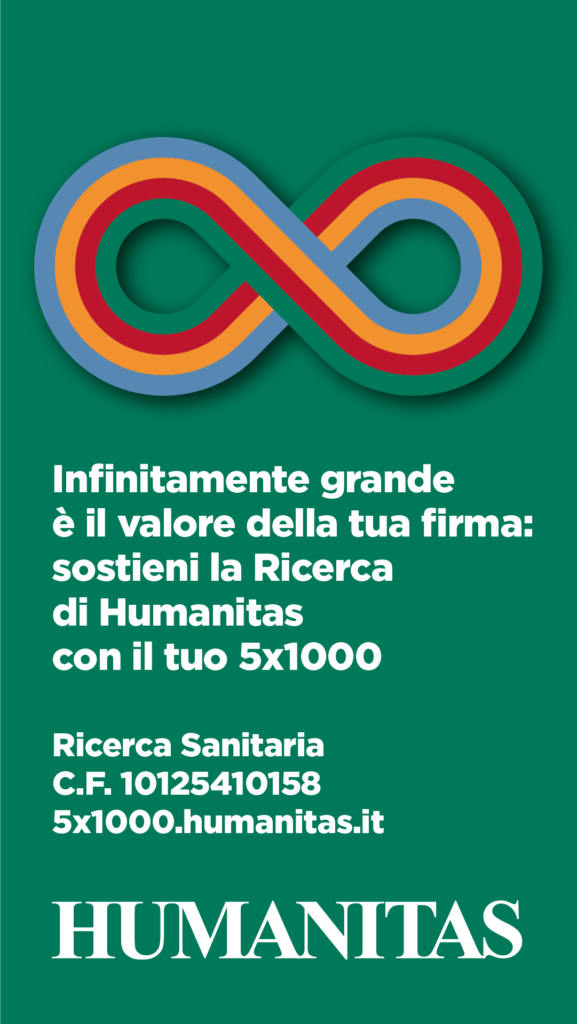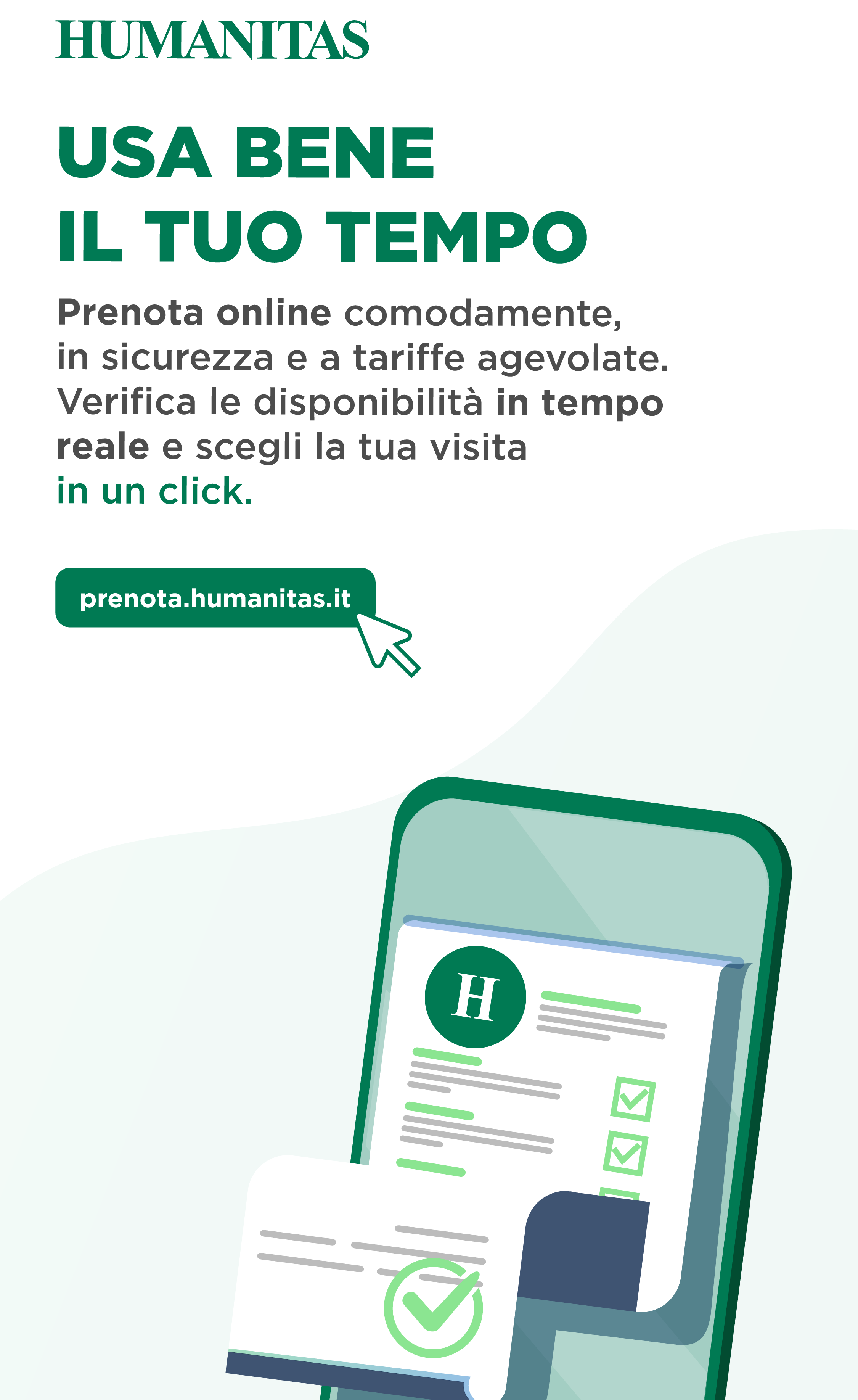La scienza interessa il pubblico, ma non si può dire che goda di buona stampa, perché i risultati della ricerca sono presentati spesso in modo insufficiente o fuorviante, soprattutto nel campo della medicina. E in Italia in modo particolare, anche se per alcuni aspetti tutto il mondo è paese. Su questi temi si sono confrontati scienziati e giornalisti durante un convegno giovedì 8 febbraio nella Sala Blu 2 del MIC-Milano Convention Center.
In genere, nei dibattiti sull’argomento, la cattiva qualità degli articoli divulgativi viene attribuita a una insufficiente cultura scientifica dei giornalisti. Il limite di questa posizione consiste nel considerare come buon giornalismo scientifico il semplice fatto di riportare senza strafalcioni quello che le fonti (i ricercatori, gli istituti, le riviste specializzate) affermano. In realtà questa è una condizione necessaria (anche se tuttora spesso insoddisfatta), ma non sufficiente. Sarebbe come sostenere che un buon giornalismo politico (o economico, o persino sportivo) consista nel riportare senza strafalcioni quello che dicono i politici, i finanzieri, gli allenatori: in sostanza le veline.
La vera funzione del giornalismo nella società contemporanea è quella di costituire un controllo indipendente (almeno teoricamente) sugli altri centri di potere, per mantenere l’equilibrio delle parti. Perciò anche il giornalismo scientifico non deve essere solo una fedele cinghia di trasmissione delle conoscenze elaborate dal mondo scientifico, ma soprattutto dovrebbe fornire una informazione critica, cioè capace di dare al lettore anche gli elementi di contesto che lo aiutano a comprendere e farsi un’idea propria. Il concetto è stato ben espresso dal premio Pulitzer americano Jack Fuller: “Dal giornalismo ci si aspetta che illumini argomenti di interesse pubblico, e ciò comprende l’impegno a scoprire informazioni rilevanti che altrimenti resterebbero nascoste. Così il giornalismo deve affrontare il mondo della scienza con lo stesso scetticismo consapevole che riserva a un consiglio comunale o a un uomo politico”.
L’incontro, organizzato da Fondazione Carlo Erba, il Gruppo 2003 e Fiera Milano nell’ambito di “Aspettando MilanoCheckUp”, ha riunito ricercatori e giornalisti tra i più qualificati a discutere su casi concreti di informazione cattiva o insoddisfacente, per individuarne le cause profonde e i possibili rimedi.
In questo numero pubblichiamo il contributo in lingua originale di Lawrence K. Altman, corrispondente medico del New York Times.
Negli scorsi numeri abbiamo pubblicato quelli di Gianna Milano, giornalista di Panorama, di Walter Bruno, responsabile Comunicazione di Humanitas, di Roberto Satolli, del Gruppo 2003 e Agenzia Zadig Giornalismo Scientifico, e di Riccardo Renzi, direttore di Corriere Salute.
Medical journalism
di L.K. Altman
It is a pleasure to return to Milan, to see some familiar faces, and an honor to participate in the Carlo Erba Foundation symposium that deals with conveying scientific and medical information to the public.
In my earlier discussions, Dr. Remuzzi and Dr. Mannucci asked me to discuss how we work at The New York Times and to discuss medical journalism with a focus on its accuracy and shortcomings.
My perspective will be that of an american physician and journalist who has covered medicine for The New York Times for more than 37 years.
I have been involved in the many different levels of medical communications and realise that communications about medical and health information are difficult and complex. Doctors constantly communicate with other health professionals. Doctors and health professionals also communicate regularly with patients. These groups are trying to communicate with the public in a way that most have not done in the recent past. These communications can be helpful. But because of the different venues including the internet, television, radio, magazines and newspapers, there has been confusion and conflicting information at times. Determining what is accurate is a challenge for both health professionals and the public.
In the United States over recent years, I believe that both the medical profession and journalism have improved the communication of medical information to the public. (Nevertheless, as the cases presented this morning illustrate, shortcomings can show up).
My discussion about communicating medical information to the public will focus on eight areas:
I. the history of communications between the medical profession and the public;
II. a definition of medical journalism;
III. the distinction between informing and educating;
IV. what medical journalists do;
V. how we work at The New York Times;
VI. some problems in medical journalism;
VII. the economics of medical journalism;
and lastly
VIII. suggestions for resolving some issues.
There is a lot of ground to cover. Obviously, a forty minute lecture does not allow sufficient time to cover these points in as much detail as I would like.
I.
The American public usually reads, hears, or sees something about medicine in the news every day. This is true in Italy, I have been told. To many of you, that phenomenon may seem new. Yet, it is not, at least in the United States.
Almost from the founding of my country, medical advances and those that affect public health have made news. For example, in 1799, when the American, Dr. Benjamin Waterhouse in the city of Boston in the United States, learned about Jenner’s development of the smallpox vaccination technique in England, Waterhouse said he “was struck with the unspeakable advantages” that smallpox vaccination could offer. Waterhouse then proposed its routine use for his fellow Americans through the usual channel of communication a newspaper article. Dr. Waterhouse said:
(quote) “as the ordinary mode of communicating even medical discoveries in this country is by newspapers, I drew up the following account of the cow pox, which was printed in the Columbian Centinel March 12, 1799”. (end quote).
The Columbian Centinel was a semi-weekly newspaper published in Boston. Unfortunately, the Columbian Centinel has gone the way of so many other publications since then.
So has smallpox. Not so long ago, smallpox was one of our greatest scourges. Now smallpox is the only naturally occurring disease that we have eradicated. One might speculate about why it took so long to use a vaccine developed nearly 200 years earlier to wipe out smallpox. Where were medical and public health leaders calling for such action? Where was journalism’s voice? But that is another story.
On a personal note, I worked in Africa on a very early stage of the smallpox eradication program. I consider that experience a highlight of my career because I consider the eradication of smallpox medicine’s greatest triumph.
Then and now, doctors and others have ridiculed many of the initial news accounts because of the medical establishment’s and the public’s reticence in accepting new findings. Also, doctors have criticized the journalistic coverage because they felt that there was need for confirmation and time to test the safety of new therapies before they could be marketed.
II.
Let us turn to my second area of focus — a definition of medical journalism, which is important because scientists say that precision is crucial to good science. A definition is part of precision.
In my experience, the medical and scientific communities generally equate medical journalism with the layman’s arena. Scientists tend to think of journalism in only popular terms: general interest newspapers, magazines, radio and television, and maybe the internet.
My definition is much broader: it includes medical and scientific journals. We must understand that point. It is imperative to realize that journals have become a prime source of the information that is conveyed not only to the medical and scientific communities but also to the public. I submit that failure to gain that perspective is one reason for some shortcomings, and so it is necessary to examine them in that context. (I will return to those shortcomings later).
III.
Journalists focus on what appears to be new, determine its significance, verify the accuracy of the new reports and claims, and must present that material by deadlines, which vary in time. For daily journalists, deadlines may be as short as hours or a day. For weekly or monthly publications deadlines may be longer.
Since Waterhouse’s and Jenner’s time, the volume of medical news has vastly increased because so much more money is spent on biomedical research.
Journalism plays a role in informing health professionals and the public about what is new. We might spend a moment to comment on the distinctions between informing and education.
Academics think of education in a formal way. When students receive an education, they become captive audiences, absorbing prescribed material in a predigested course. The students must do required reading and listen to lectures — no matter how stimulating or boring they may be — to pass the examinations and gain the credits needed to graduate.
But journalism, unlike formal educational institutions, lacks a captive audience and does not educate in a formal way. Newspapers, magazines, radio and television give no examinations, no credits, no diplomas. So journalism has to compete for the public’s attention, which partly explains why its styles differ from those in schools and universities. A professor can give boring lectures, confident that the students will still have to attend and take notes to pass an examination. If news organizations informed the public in the same way, they would soon be out of business.
So journalism allows for an element of entertainment and drama. Formal education does, too. Think back on your best teachers. Wasn’t it a flair for the theatrical or something unusual that helped make many of them so successful?
Many doctors criticize journalism’s rush to print or broadcast. But the critics forget the importance of timeliness, which is essential to general interest journalism. People learn best when something is fresh and interesting and in the news. As James (“Scotty”) Reston, the late distinguished columnist for The New York Times once said:
(quote) “the great opportunity of the daily newspaper is that it reaches people when they are paying attention” (end quote).
The same is true for doctors in training who are called on to have a patient’s medical history in the chart and read up on the problems by morning report the day after admission to a hospital. There is nothing more vital than health, an area where timely information can literally save lives.
So an important goal of medical journalism is to improve people’s health by raising the quality of science, reporting advances, bringing attention to various issues in health policy and pointing out defects and serious problems when they occur. I believe that an educated public is a better public and makes for better patients. Surely, educating the public will involve errors and create some problems. But I do not know how many, who will make them, and how they might be avoided to do the best job possible. We hear about them as anecdotes here and there, and I seldom know how accurate the anecdotal versions are. There is no need that such a situation exists because the problem can be studied the way any medical problem is studied. The shortcoming here is that those studies are seldom undertaken.
IV.
Now for what medical journalists do, and how we work at The New York Times.
What medical journalists do can be simply stated as reporting medical news. For the sake of discussion, we can divide medical journalists into two groups. One group writes or works for journals for medical professionals. The second group works for newspapers and other news organizations aimed at the public. Each group attempts to advance knowledge by presenting news in an accurate, concise, and timely way.
Medical journal editors act in the interest of the reader, just as those who produce The New York Times. They seek to sift clarity and truth from evasion or even fiction, just as the general interest journalist does.
Dr. Theodore fox, a former editor of The Lancet, which is published in London, viewed his and many other scientific journals as newspapers. He said:
(quote) “the proper function of the press in our society is to reveal and criticize, to stimulate and shock, to be a gadfly and an enfant terrible. For a newspaper to prefer safety to freshness is a sign of fatigue and of need for new blood”. (end quote).
The same is true for lay medical journalism. Each category of medical journalism tends to report in different styles. How we present medical news depends on the audience. Journalism for the public tends to rely more on the story format. For professional journals the news tends to be results of studies or experiments; the story and human interest angles are omitted.
Supposedly, the scientific publication is the place where all the technical information is presented so that any other scientist can try to confirm or refute the results by replicating an experiment or study and medical practitioners can garner the details needed to evaluate a new therapy or new findings about an old one. Medical journals make a big issue that their studies are peer reviewed.
For the newspaper reader, the specific methodological details are subordinated to results, the bottom line. Does it work? Does it cure? The background, which physicians are expected to know, and the steps to success, which are referenced in the medical journal paper, are spelled out. Just as medical journals use off the record sources for criticism in the peer review process, newspapers use off the record sources for criticism in evaluating and reporting its stories. A new round of peer review takes place in the newspaper, with published comments of authorities on the applicability and appropriateness of the paper. Sometimes these comments are off the record, just as peer review is off the record. Sometimes, unlike the journal, they are on the record. The criticisms published in a newspaper often presage the letters to the editor that may appear eventually in a journal.
Our mutual goals are to improve people’s health by bettering science, reporting advances, bringing attention to various issues in public health policy, and pointing out defects and serious problems when they occur. The journal helps the doctor think in his or her professional way; the general interest publication helps the patient think in his or her lay way. In prompting such thinking, we ask the same questions, but in different ways. Each group has its own technique for asking the questions.
Yet both groups seem to share shortcomings: they seek headlines and do not follow up on stories as much as they might. Neither journals nor the popular media has an exemplary record for followup reports when today’s potential breakthrough becomes tomorrow’s overblown promise. Editors of medical and scientific journals have a public responsibility that, unfortunately, some do not always live up to.
While many medical and scientific journals publish letters that relate important information about earlier reports, you may be surprised to learn that a number of others do not publish letters.
Consider the following:
In 1980, scientists at Yale who had plagiarized and falsified data wrote letters to journals to retract their papers. Dr. Philip W. Majerus, the editor of The Journal of Clinical Investigation, rejected the letters. Dr. Majerus wrote that he would not publish a letter of retraction about “potentially fraudulent” research “since it hardly seems a meritorious issue that justifies breaking our tradition of publishing only original scientific work”. And that was even when the original work was fraudulent, and thus worthless, if not dangerous.
Newspapers, magazines and electronic journalism often do better. When readers bring such critism to the attention of the administrators of news organizations, the administrators pay attention and try to correct the record. Corrections appear daily in most newspapers, though sometimes the corrections are not as detailed as many would like.
V.
When I joined the science news department of The New York Times in 1969 it was a small enterprise, and it has expanded significantly since then. In 1969, as I recall, there were about four medical reporters and two editors in the science news department. There were additional reporters covering other areas of science. I came as the first full time physician to work as a reporter for a daily newspaper, at least in the United States. Now there are at least eight medical reporters and a number of others who contribute as free lancers. There are more than 20 full-time people in the department, counting editors and graphics people as well as reporters and editors. In addition, the metropolitan desk has separate reporters to cover health in the states of New York, New Jersey and Connecticut. Also, there is an expanding staff developing a web site for medicine and health. In other words, ours is a collegial group of journalists who work in a small bureaucracy.
Each week, those of us who are not traveling meet for about an hour so that we can tell our colleagues what we plan to cover or would like to cover. One aim is to try to avoid unnecessary overlap. But any attempt at planning and carrying out those ideas can be jettisoned beginning moments after the meeting concludes. The reason is that we are in the business of covering the news, which by its very nature is notoriously unpredictable. Which reporter ends up doing which story depends in large measure on what he or she and the other reporters are doing at a particular time.
We cover the news through a number of sources: here is a sampling of what can go on during a typical day.
– editors and reporters monitor the wire services for any stories that concern science and medicine.
– sources and readers write or call in with ideas. The suggestions may relate to personal experiences with an illness or personal encounters with doctors in offices and hospitals. Readers may offer tips on medical advances, their experience in participating in a clinical trial, or what they have heard around a hospital or clinic.
– editors and other reporters also make suggestions based on their news sense as well as on what they have heard, read or experienced.
– our e-mail and regular mail is flooded with correspondence from readers. It can be a full time job just to keep up with the mail. We try to answer the important correspondence.
– public relations companies make pitches for coverage. The accuracy of the pitches and press releases varies widely. Much is accurate but of little interest except to the company or doctor or medical school that hired a public relations firm to issue a press release. Also, much of what is sent to us concerns material that is too specialized for a general newspaper’s audience.
In addition, at the end of each week, we invariably receive press releases from journals and public relations firms seeking coverage for articles scheduled for publication the following week.
– medical schools, universities and hospitals have seized the opportunity to use press releases as a marketing device with the aim of attracting patients.
At least one hospital in New York has advertised that its doctors write the papers that other doctors around the country use to treat their patients. So why not come to our hospital first?
– we look through journals for new advances and indications of trends and we read the news releases issued separately by various journals.
we attend and cover medical meetings where we select studies to report and try to keep alert to trends.
– we search the internet for information on points that interest us.
– we read other newspapers — the competition — to see what we might have missed covering.
– we also try to carry out one of journalism’s main functions in the United States — serving as a watchdog of the government, government policies and how government spends taxpayer monies.
Journalism also is supposed to serve as a watchdog of private organizations that affect public policies. Newspapers have uncovered conflicts of interest and fraud affecting papers published in leading scientific journals.
For example, South Korean journalists played an important role in exposing the fraud in the stem cell research published in Science magazine last year. Science magazine is published in the United States.
Another example that exposed the shortcomings of journal editors occurred in 2000. The New England Journal of Medicine apologized to its readers for violating its own financial conflict-of-interest policy 19 times over the preceeding three years in choosing experts to review drug therapies. The New England Journal of Medicine learned about the problem only because a reporter for The Los Angeles Times reported them in his newspaper. But — and this is a serious shortcoming — The New England Journal of Medicine’s apology in no way credited, or even mentioned, The Los Angeles Times. The reason, the journal’s editor said, was that “it did not seem particularly relevant”.
Then, in considering stories to write about, we search back issues of The New York Times and other news organizations to refresh our memory about what we have covered concerning a possible new story.
If we write about a report presented at a scientific meeting we also interview one of the authors of that paper. We try to obtain comment from other experts. Journalists are supposed to be healthily skeptical and critical when the situation warrants. So, at all times, we make attempts to obtain comment from other experts. However, the scientific community long has shied away from being held publicly accountable.
As many journalists see it, doctors want journalists to be cheerleaders, expecting journalists to help them get grants and further their careers. Too often the media does just that — magnifying and then bugling scientific reports. So an important shortcoming on the lay journalism side is that although we are critical, we are generally not as critical about the scientific reports and claims as we should be.
My description of our way of working is intended to offer a few insights into the problems that can arise on all sides. Shortcomings can come anywhere along the line, and do.
Journals cite their scrutiny accuracy and reliability, particualrly for statistics, as major justifications for linking peer review and embargoes. But a number of papers analyzing the methods used in published journal papers have criticized their accuracy showing that the statistical methods may not have been as robust as the peer review claims claim. Another shortcoming is that journals publish papers reporting a benefit of a certain percentage without giving the absolute numbers. Even when we have tried, authors have not come up with the statistics that are more meaningful to the reader and the public.
Newspapers, too, have made major blunders. In 2003, in a widely publicized case, The New York Times management failed to detect plagiarism and fabrications in reports from a reporter, Jason Blair. There have been earlier frauds in newspapers, though not involving science stories. A notorious one was by a Washington Post reporter, Janet Cook.
VI.
What, then, underlies many shortcomings? Clearly, the medical profession has long distrusted journalism and the need to communicate with the public. Sir William Osler, the Canadian-American physician, captured that attitude succinctly in one of his aphorisms, which said:
(quote) “believe nothing you see in the newspapers — they have done more to create dissatisfaction than all other agencies. If you see anything in them that you know is true, begin to doubt it at once”. (end quote).
Osler was, and is, a revered figure in medicine. An icon. If Osler did not originate the thought about the distrust of lay journalism, he certainly popularized it. Osler lived before radio, television and the internet had their impact. In Osler’s time, newspapers and magazines were the main means of public communication. As for shortcomings, there may have been good justification for the aphorism in Osler’s day. Undoubtedly The New York Times and other newspapers erred in accounts. I am sure medical journals made errors, too. How often either group erred is debatable because no one has studied the issue. That is a shortcoming.
Even so, the medical profession must share some blame because of its traditional reluctance, if not refusal, to talk to the press. That practice only leads to speculation from outsiders like journalists and the public.
Shortcomings include omissions. The New York Times did not cover the discovery of insulin in the early 1920’s in Canada. So, if a reader relied solely on The New York Times he or she would not have known about insulin for many years!
Osler’s aphorism has not served society well. Wide acceptance of Osler’s aphorism among the medical and health profession has proved costly to medicine and society because it helped perpetuate the mysticism of medicine, and isolated the health profession from patients and society. That attitude contributed to the health profession’s forfeiture of its leadership in informing the public about the nature of medicine and public health. In the late 1950’s and early 1960’s, when I was a medical student and in training, the general attitude among doctors toward the lay press could be summed up in the phrase: fear and disdain. At that time, and in the decades thereafter, few health professionals tried to communicate directly with the public. Physicians and scientists said they considered it more important to communicate with their peers in technical jargon than to the public in simpler terms.
What happened? The public perceived many physicians and health workers as arrogant. Instead of supporting efforts by doctors to communicate to the public, many health professionals looked down on these colleagues as publicity seekers.
Dr. Harry Nelson, the medical officer of Pretoria, South Africa, put it another way when he took issue with an article that stated: “the press is capable of doing more damage to more people in a very short time than almost any other known organization”. In his article, “the press and us”, Dr. Nelson responded: “this statement about the press which is an oft-repeated accusation by many of our colleagues, is exaggerated and out of proportion to the good publicity which we do get and can still get from the press. Indeed, so much more could be done through the willing cooperation of the press to give the public intelligent, useful, and health-promoting information, if only we would make better and correct use of it”. Dr. Nelson went on to offer testimony to the rare instance in which he was misquoted, saying:
Quote “pressmen are just as acutely conscious and conscientious about giving correct information as you or
I. They also have to safeguard their own reputations and the security of their jobs. A newspaperman’s success depends on his reputation for accuracy. It is perhaps true that we may be misquoted, but this is often our own fault, because we have not been careful enough about the way in which we give information”. End quote
This was a period in the United States when the public expanded its financial support for medicine as never before. Through taxes and federal insurance plans like medicare, the American public paid for the bulk of the costs of health care, biomedical research, medical education and public health. At the same time, public health officials failed to communicate to the public in a meaningful way. One result was that many people have learned little about what public health means. Responsibility for that failure rests largely with the leaders of public health and medicine as well as with lay journalism. The public does not have a clear enough understanding of the differences between medical care and public health. The main concern of doctors is to care for individuals. That type of thinking differs from, but is not in conflict with, the concern of public health workers whose main concern is prevention. The role of public health is to prevent disease and injury, environmental hazards and infectious and communicable diseases like the potential for an influenza pandemic. Prevention is far less glamorous than the action in an emergency room or operating theater. Prevention can be just as powerful and important, if not more so. But public health leaders have not communicated well enough to let the public know such facts.
VII.
In assessing reasons for shortcomings in medical journalism, we cannot overlook the economics of the publishing industry because of the importance money plays in that endeavor. In my experience, doctors often speak of newspapers and other forms of media as organizations that sensationalize solely to sell papers, attract viewers and make profits. Unless, of course, the article is about their work and their name is spelled correctly!!! In the same breath, doctors speak of journals as pure because they are not-for-profit organizations.
This attitude gives an oversimplistic, inaccurate and misleading view of the economics of the medical publishing industry. There are many striking similarities between medical and scientific journals — and news organizations like The New York Times. All have an eye on bottom line profits, and the bottom line reflects circulation and advertising. Medical and scientific journals, whether for-profit or not-for-profit, must fill their pages. Medical and scientific journals, whether for-profit or not-for-profit, must pay their bills. The fact is that many journals are commercial. That is, they are owned by commercial for-profit companies. Examples include Cell, The Lancet, Nature, and Science and a long list of other journals. Many are owned by companies like Elsevier. In the United States, many medical school deans and librarians are complaining that their budgets have increased enormously to pay for the huge subscription costs for many journals. All the while, the commercial journal publishers are thriving.
Then there are those journals that are owned by professional medical societies that need or rely on the profits to run their organizations. Examples include The Annals of Internal Medicine, The Journal of The American Medical Association, and The New England Journal of Medicine. Those who run a newspaper or scientific journal need readership, paid circulation (whether through membership dues or subscriptions) and, at least for the major journals, advertising. Journals seek headlines and coverage in newspapers and on radio and television because the exposure helps increase their circulation, advertising rates and profits. Journals also seek to profit from a rule that imposes embargoes prohibiting release of information in an article before they publish it. This rule ensures the journal of exclusivity. But, of course, the journal denies that this is the purpose of the rule. Instead, they justify it on grounds that the information must be peer reviewed before it is released to the public.
Not incidentally, the rule has helped journals become cash cows for their owners by increasing circulation, readership, and advertising rates and revenues. The rule, health economist Professor Uwe Reinhardt of Princeton University wrote: (quote) “exists as much to enhance the economic position of the journal as to protect the public from the premature release of information” and impedes “the free flow of information, unwittingly or not”. (end quote). Journal editors rely on threats to enforce the rule and accomplish their aims. For example, they have penalized authors who have spoken to the press before publication in their journal by withdrawing the paper. In March 1996, Hans Wigzell, President of the Karolinska Institute in Stockholm, said that two journals had prevented two groups of scientists from reporting their findings at an AIDS meeting by imposing the rule. Dr. Wigzell expressed disgust at the behavior of the journals, Nature and Science, for (quote) “behaving just like pharmaceutical companies — gagging the scientists to protect some commercial interest of their own”. (end quote)
Making profits is the American way and presumably the Italian way, as well. But how profits are derived can be a public policy issue if taxpayer funds are involved. In the case of medical journals, we know little about where the profits go, particularly among the not-for-profit journals owned by professional societies. Many journals refuse to disclose figures about their revenues, costs and profits.
We do know that profits help support lobbying. Journal revenues help keep the costs of dues down, membership up, and make it easier for professional societies that profit from them to carry out lobbying activities. That leaves many people wondering whether the journals supported their respective medical societies rather than the other way around, as is commonly assumed. Here we have an interesting public policy situation worthy of serious thought, particularly from journalism’s watchdog function.
Embargoes allow privately owned medical journals substantial income from publishing copyrighted reports based on taxpayer supported research and in competing with meetings for support from pharmaceutical companies. The public pays for the scientist’s work. Fearful that premature disclosure of findings to the public, which paid for the work, will jeopardize publication, the scientist often withholds data from a scientific meeting, or agrees not to publicize the findings until after the time of publication because of rules imposed by journals. In publishing taxpayer supported work, the scientist turns over the copyright to the journal. Just look at papers published by researchers from the National Institutes of Health and the Centers for Disease Control and Prevention in the United States. The public may also pay page charges for the author to publish in the journal. The journal asks other scientists to volunteer their time, often at taxpayer expense, to act as peer reviewers. Libraries then purchase the journal at high subscription rates, sometimes in five figures, and usually at taxpayer expense.
The journal profits from these and other practices, as any legitimate commercial business like a for-profit hospital chain or for-profit h.m.o. has a right to do. But is there an inconsistency in viewing profits made from journals right, but profits made in the health care industry wrong? Yet the scientific community delays reporting the findings to the investor, the public, and freely gives away the publication rights to companies and societies that do not plunk back a penny into the scientific endeavor. The shortcoming here is that if the information is important, there should be no delay in reporting it. Delaying it can create suspicion on the part of journalists and readers and outsiders.
As a matter of public policy we should be asking questions like:
— who profits from the practice?
— how are the journal profits spent?
— how often are profits returned to scientific work?
— if not, why not?
— how does the practice affect what scientists tell journalists and, in turn, the public?
— how often do the practices lead to shortcomings?
VIII.
In closing, let me touch on the mutual obligations between medicine and the press.
First, doctors should learn to communicate clearly in a way their friends can understand and without talking down to them.
Second, doctors could help inform the public about health care issues, research and costs by talking more to local groups and civic organizations. I do not mean as lobbies for vested interest groups. But as humans, as interested citizens, speaking out as patient advocates.
As politicians have demanded more acknowledgement for the taxpayer investment, congress has urged N.I.H. And its grantees to publicize their findings. The director of the National Institutes of Health, Dr. Elias A. Zerhouni, has urged scientists to get out of their laboratories and tell their elected government representatives why they need more funding and what is at stake for failing to support such efforts.
Third, a more honest approach is needed in the sometimes exaggerated promises and claims made by journalists, doctors and health organizations for what medicine can do.
Let me be clear. This is a two way street. Journalists’ errors must be corrected by prompt replies from scientists and doctors. But scientists’ overenthusiasm must be stopped by comments from peers lest there be overexpectation from the public.
What can readers or viewers do when they detect factual errors in reporting? There are, of course, letters to the editor. But that is only one method. Administrative letters can be sent to the responsible executives at the newspapers, magazines, television and radio stations to point out specific errors of fact. When the executives receive enough such letters they are bound to have an effect because credibility is the basis of serious journalism. Once a publication or program loses its credibility, it loses its audience and its livelihood.
And if you think the management has not responded appropriately, then copies of those letters could be sent to journalism reviews for possible commentary and to the federal agencies that regulate the airwaves. Such letters would be useful to researchers who do the studies I suggested earlier. Ours is a system of checks and balances. There is no reason medicine cannot cover journalism just as journalism covers medicine. Earlier, I said that a serious shortcoming was that not enough studies were conducted concerning the complaints about misleading journalistic coverage. So I would urge that more studies be conducted to determine the validity of the complaints registered against medical journalism.
I have in mind one model study of the swine flu immunization program in the United States, or what some would say, fiasco, the American College of Physicians awarded a grant to David Rubin, a professor of journalism at New York University who went on to become Dean of the Newhouse School of Communications at Syracuse University. Dave Rubin chose to study a variety of newspaper, television, and wire services for their reports and coverage during the first week of the swine influenza immunization campaign. The results of his study were published in several places. One was The Annals of Internal Medicine, another was The Columbia Journalism Review.
Ample opportunity exists to do similar studies. Many areas that affect medicine, health and the community could be studied. The coverage in the newspapers and magazines and on the radio and television could be reviewed to determine what the public read or saw or heard. How accurate was it? What was the source of misinformation, or errors, if there were any? We could learn an enormous amount from the answers. From the accumulated results, we will all know how much harm or how much good is done to the patient. If those studies are to have credibility among the public, they must be done independently — not by those involved or with axes to grind.
Fourth, journalists must probe more into the ways things are done in medicine because much research and patient care is publicly funded. Costs have become critical as society faces limited resources, debts and inflation. One important function of journalism is to cut down on waste and to improve efficiency.
Fifth, but not least important: doctors must learn that it is honorable to speak out to the press, to provide facts, to correct errors, and to give reasonable testimony on controversial issues.
Doctors have made considerable progress in this regard over the last few years because they are learning that if they do not meet their responsibilities they will continue to subject themselves to a selecting out process. As long as the responsible leaders keep silent, the quacks and charlatans will fill the vacuum. They may try anyway, but you will have a better chance of thwarting such efforts if you talk out in the beginning.
There are many sides to complex public issues. Under our systems of government, they are settled in the political arenas —- and by that I mean by the public at large, the taxpayers and the people whose health you seek to improve.
In concluding, may I remind you that the times and reasons are different, but the principle is not. Do not overlook what Dr. Waterhouse said about communicating the news of medicine to the public 208 years ago.







